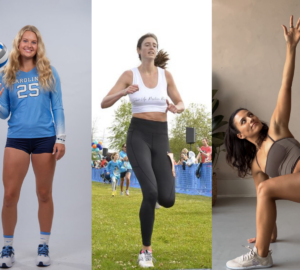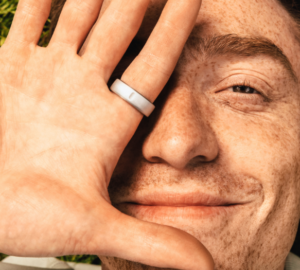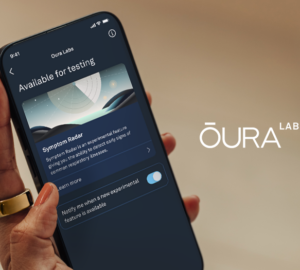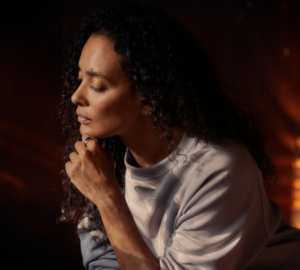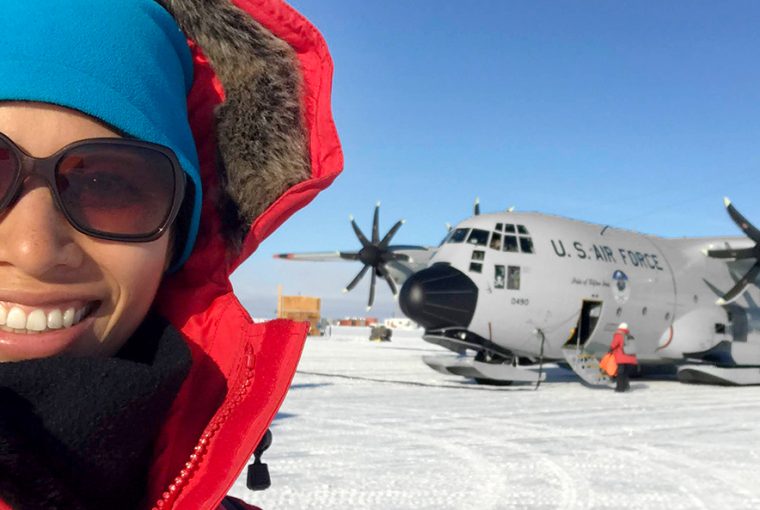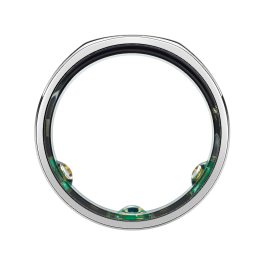“You stepped off the plane and there was no time to acclimate, your body just arrived in the extreme.”
—
What is it like to live in the middle of Antarctica in December? To many, it sounds like a cruel punishment, but Ann Tsung, a UTMB Aerospace Preventative Medicine Resident, took on the challenge with her Oura Ring tucked into a warm glove.
Ann left the comfort of warm Houston, Texas, and traveled to Antarctica to find out how her body would adapt to sub-zero temperatures, high altitude, and constant daylight.
Ann is preparing for her upcoming role as a NASA flight surgeon, where she will support astronauts from the ground, and Antarctica’s extreme conditions make it an ideal location to spend part of her medical training.
“. . . that’s just what it takes to learn aerospace medicine. In space, it requires so much ingenuity because we’re on the ground and they’re 250 miles away. We have to work with limited information, adverse conditions, and only a few tools. Antarctica recreates that and there’s a lot of telemedicine there. It changes the way you care for patients.”
The majority of Ann’s trip was spent at US McMurdo Station, the continent’s largest research facility. However, a 4 day excursion to the South Pole (with even colder temperatures and higher altitudes) ensured she didn’t leave without having pushed her limits.

What Did She Learn?
Adjusting to Altitude Is Never Easy

When Ann arrived at the South Pole, her body was hit with 10,000 feet of elevation, 20+ mph winds, and temperatures hovering around -20℉.
“I felt the worst I’ve ever been, my [oxygen saturation] was like 88% , my blood pressure was low, I woke up multiple times in the night and couldn’t sleep until 2 AM. I had major altitude sickness for a few days.”
With a collection of expeditions—including Mount Kilimanjaro, Machu Picchu, Mt. Rainer, and multiple weeks in the Himalayas and Everest Base Camp—under her belt, Ann is no stranger to high altitudes or low temperatures. However, this experience was purposefully different, as her goal was to simulate the physiological adjustment issues astronauts may encounter on their voyage.
“On past excursions, I’d take Diamox to help me acclimate and I’d gradually adapt to the conditions. Here, it was instant. You stepped off the plane and there was no time to acclimate, your body just arrived in the extreme.”
Here are some screenshots that show both a clear pattern of stress during Ann’s South Pole excursion (Wednesday-Saturday) and her body’s recovery when she returned to homebase at McMurdo (Sunday):

On Sunday, when she was back at McMurdo, her body “breathed a huge sigh of relief and shot back up.” She remained at the station for 3 more weeks, where her RHR continued to stabilize and her HRV remained strong.

“Being back at McMurdo, the contrast was crazy. You can breathe again! I could walk a few steps and go about my day and not be panting. Even stepping onto the plane, I felt instantly better – they pressurized it to 2,000 ft and it made a huge difference. It also helps back at the station that it’s not a whole ordeal every time you go outside. At the South Pole, you need warmers for your hands, for your feet, even for your equipment like your phone. Oh…and at McMurdo you get to shower whenever you want vs. twice a week. That helps!”
24/7 Sunlight Confuses Internal Clocks

“You probably can’t tell but in this photo, it’s actually 9 PM at night. Some people even took advantage of the sunlight at night and you could go for a hike or go watch seals at 10 or 11 PM …”

In Antarctica, winter is shrouded in 24 hour darkness, while the summer months beam with nothing but sunshine, and this dramatic shift drastically changes how the residents operate.
“In the winter, no one comes through. You’ve got 4 months of darkness and no planes start arriving till summer opens up and we can arrive safely.”
This can really throw off your body’s internal clocks, which use daylight to regulate your sleep and wake cycles. Without the usual natural light cues, Ann used tools like blue light blocking glasses and Alteril, which contains melatonin, to help train her body to prepare for bed, even when the light shining through her window made it look more like noon than midnight .
But, even with help, human error still comes into the equation: “It was difficult for me to remember to carry my blue blockers at all times. I wore sunglasses at night when I was outside but it definitely delayed my sleep when I forgot.”
Below are a couple screenshots that show the clear difference in sleep between a night where Ann forgot her blue light glasses and a night where she wore them as she prepared for bed. The difference is night and day.

What’s Next?
Ann’s polar plunge has left her with a wealth of data that she’s now analyzing to discover the ways her body adapted and changed. She tested multiple wearable devices and sleep trackers, while also collecting data from a continuous glucose monitor, which shows how her microbiome responded on her journey.
She hopes to analyze and publish her findings in the coming months.
Ann’s Key Sleep Tips
Throughout her journey, whether she was at home or battling the Antarctic tundra, Ann collected advice to help those of us trying to optimize our sleep.
- Research Your Blue Blockers: “There have been studies done where they pass light through glasses and show that the $10 blue blockers even perform better than the $200 pair. Do your research to be sure you’re getting a quality tool. I use Uvex’s glasses because they block the most.”
- Cancel The Late Night Snacks: “I’ve noticed if I stop eating 3-4 hours before going to bed, my HR goes from 50s to low 40s and that’s when my HRV goes up and I feel well rested and I require less sleep. In Antarctica dinner starts at 5 and it completely re-trained me to see how much it could improve my sleep.”
- Set A Bedtime Alarm: “Alarms aren’t just for waking up. I set an alarm each night at 8 PM to remind me not to start anything, to start winding down. The hard part is not waking up early, it’s going to bed at the right time to be ready for the next day.”
- Own Your Sleep Routine: “I never take my phone into the bedroom. It stays in the dining room. When it’s time for bed, I actually have this setting on my Google Home where I say ‘spa mode’ and the WIFI automatically shuts off, I have a salt lamp that comes on, there’s aromatherapy, and my lights dim down to red. If I need to get up in the middle of the night, there’s no light aside from motion sensored yellow light that’s so dim it won’t mess up your sleep.”
- Tape Up Lights from Chargers: “I tape up any chargers that emit light in the bedroom and typically the phones are charging outside. Those lights are easy to forget but they make a difference.”
- Test It For Yourself: “I do shift work so sometimes I would have circadian disturbances and difficulty sleeping. I worked with my doctor to find a solution. I found that 20 minutes with the Alpha Stim, a cranial electrotherapy tool helps me. I’m still learning how to use it and the science behind it but if I learn about something, I like to test it for myself. The device was developed to treat insomnia, anxiety, and PTSD. For me, it cuts the mental chatter. It’s my backup to clear my mind when all else fails, it makes me feel like I’ve meditated for an hour and I can get to sleep.”
And one last piece of advice, if you ever go looking for the South Pole, be aware that there’s more than one: “It moves around every year! They have a ceremonial one and an actual one marked off. Bet you can tell which one this is…”

Please note: The views, thoughts, and opinions expressed herein belong solely to the author, and not necessarily those of the author’s employer, organization, or medical program. Nothing in this article should be construed as medical advice.
What’s Your Oura Story?
Everyone’s story is unique. Share yours with the Oura Community, or just give the Oura Team an update of where you are in your health journey!
